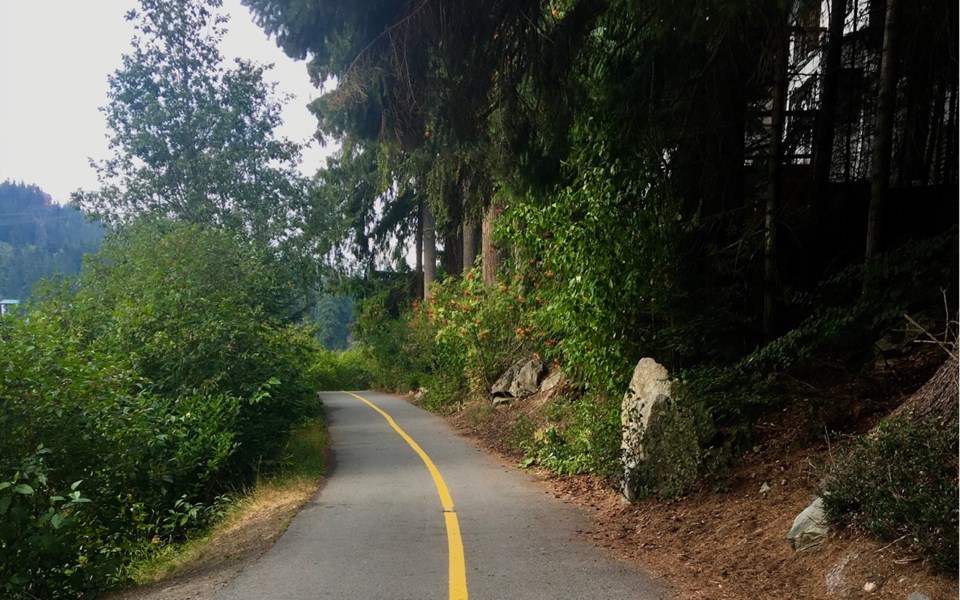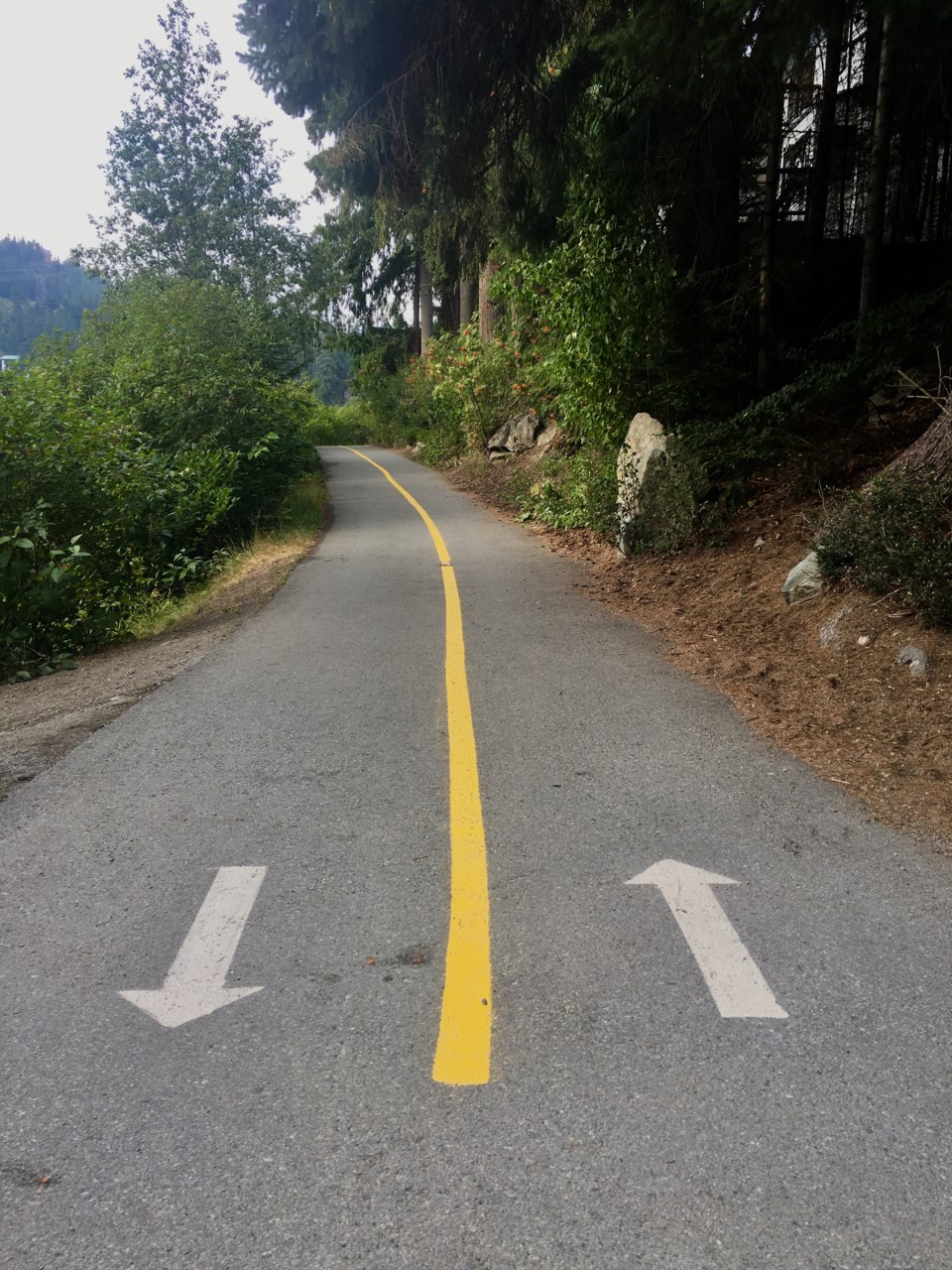
A lot of discussion has been happening around e-bikes lately. Most recently regarding them on the Valley Trail. I have a hard time with the belief that they shouldn't be allowed there. I agree, it's a delicate balance, but the Valley Trail was constructed as a shared trail. In fact, most trails in the valley are technically shared. The big difference is that being paved it automatically becomes a highway for bicycles.
First of all, the Valley Trail truly has been designed to keep speed down. Life can easily flash before your eyes if you simply look off the side once in a while or forget how sharp that upcoming corner is. Speed limits are nice, mostly unspoken, but mostly unenforced. I weigh over 200 pounds (91 kilograms), so if I crash it's going to hurt me and anything else I hit whether or not I add another 20 or 60 pounds of bike. It's going to hurt whether I'm going 10 km/h or 30 km/h. But in any case, there's a good chance I won't kill you.
A car, however, will probably kill me if it hits me at the speed most of them travel compared to the speed I'm usually travelling on my bike while being comparatively unprotected.
Being a person who is keen on reducing his carbon footprint, I'm in the market for an e-bike. I wish to reduce the trips made in my gas-guzzling van that I use for work and as a vacation home. I want to ride an e-bike to the hill and the grocery store instead of having to worry about $1.80/L gasoline. If I commuted everyday in it, I would be even more motivated.
I don't, however, want to worry so much about dying on these trips. The Valley Trail has existed as a shared trail for almost four decades. During which I'm sure millions of commuter trips have been made by bike and by foot without fatality. Don't think for a second that there haven't already been thousands of type-A, in-a-hurry cyclists that try to put a 30km/h speed limit to shame. There obviously must be a way to share this trail safely otherwise there most likely would have already been more accidents and fatalities.
Think of the relationship between car and cyclist. If you have driven either, you know there is friction. Cyclists ignoring rules of the road, drivers not giving any space. Both sides not paying attention. A quick Google of the phrase 'Cyclist killed by car' yields about 6,330,000 results and a news story that happened in Canada within the hour pops up first. Google the phrase 'Pedestrian killed by cyclist' and only 797,000 results pop up with a fatality happening not so long ago in Calgary. Much closer than the example given in Joel Barde's column of a fatality involving an e-bike in London. Point is, people are already dying.
So what's the takeaway here? Perhaps it is that all of these relationships are dangerous and we have to choose the best of two evils? It should be obvious that the relationship between pedestrian and cyclist is much safer than vehicle and cyclist. But still a question of safety remains.

How about educating all users of the Valley Trail in proper etiquette? What would you think if you found a gaggle of cyclists pedalling up the middle of the highway looking at the birds and enjoying their morning latte with kids in tow? What might happen if that driver had an L or an N on the back of their vehicle and were fiddling with their playlist?
Similar situations ring true on the Valley Trail between cyclists and pedestrians. A group of cycling tourists cruising around excited to look off the side at all the beautiful vistas doesn't sound much different. Also, pedestrians need to be aware that they are on a multi-use trail and the whole trail on a blind corner isn't a safe place to be sipping your latte looking at the birds. Maybe earphones aren't the best idea if your head isn't on a swivel? Maybe the best place to be walking on the trail is on the shoulder? Perhaps painting a shoulder or a walking lane would be a good idea? And, just how cyclists hunt out smaller, lesser used roads, there are literally hundreds of other trails in the valley pedestrians can use without worrying about dying while enjoying your latte, probably a hundred plus better views, too.
On the other side, cyclists should be using bells if you're commuting regularly. I personally love riding with playing cards in my spokes as people hear me and turn around to look from miles away. Making people aware of your presence is key to avoiding collisions. Slowing down to pass should also be a common courtesy. A certain code of responsiblity comes to mind. 'On your left' is also easy enough to shout out.
So instead of being the pedestrian who hates cyclists or the cyclist who hates pedestrians, we should all be aware of the fact that the world isn't getting any smaller and we are all going to have to find a way to share space. Hopefully in a respectful and courteous manner.
And for many different reasons, like it or not, a critical mass is coming of people who want to add another vowel to their bikes.
Jon Parris // Whistler



